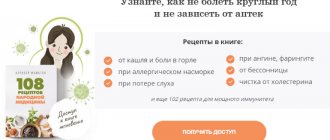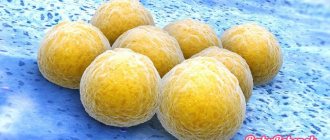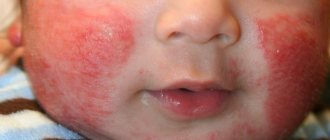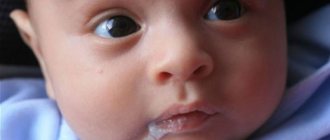Facial allergies in infants are a common occurrence in pediatrics and occur due to the baby’s weakened immune system. If such a rash is detected, it is better for parents to show the child to an allergist. Only he will be able to determine the etiology of the problem and prescribe appropriate treatment.
Allergy on the face of a breastfeeding baby occurs when the nursing mother fails to comply with the diet.
Symptoms of the disease
If your baby is allergic to milk, how can you tell?
Allergies in a newborn on the face can manifest themselves as follows:
- skin rash;
- swelling of the eyelids and mucous membranes;
- runny nose;
- lacrimation;
- sneezing;
- cough;
- spots on the face;
- bronchospasm;
- hives;
- peeling of the skin.
To prevent the development of undesirable consequences of allergies, it is necessary to make a correct diagnosis in a timely manner and prescribe adequate treatment. In acute cases of the disease, there is a risk of the following problems:
- otitis;
- atopic dermatitis;
- chronic rhinitis;
- Quincke's edema;
- bronchospasm;
- eczema;
- bronchial asthma;
- psoriasis;
- anaphylactic shock.
You can find out what allergies on the face of infants look like from your local pediatrician.
Advice. Doctors recommend feeding a newborn in the first hours of life.
After all, colostrum contains a huge amount of immunoglobulins, which are necessary for the formation of strong immunity. In addition, colostrum contains bioactive substances that activate intestinal motility.
Allergy - what is it?
What is this phenomenon? In fact, an allergy is a protective reaction of the body to various irritants, as a result of which the active production of immunoglobulin E begins. By interacting with an allergen, this substance provokes the occurrence of all sorts of visual manifestations of intolerance, for example, a pathological rash, indigestion and other unpleasant symptoms.
Irritation can affect not only the face, but also the scalp, as well as other areas. Visually, it may look like a small rash, redness, and peeling. Typically, these symptoms appear almost immediately after eating or some time after direct contact with the allergen. In this case, the baby may be bothered by itching, his skin becomes too tight and dry, and the child himself is capricious. To understand what allergies look like on the face of infants, you can familiarize yourself with the photos presented. They will help parents identify the problem in time and, accordingly, begin to eliminate it.
Differential diagnosis
Acne in newborns - what is it?
Most parents confuse infant cheek allergies with other diseases. There is a whole range of diseases that manifest themselves as skin rashes in children:
- infections (rubella, measles, roseola, chickenpox, etc.);
- sweat rash;
- hormonal imbalance;
- seborrheic dermatitis;
- hyperreactivity of the sebaceous glands;
- hormonal changes.
Infection
When an infectious rash appears in a child, other symptoms of the disease are always observed: hyperthermia (38-40 ° C), cough, runny nose, drowsiness, apathy, lethargy, tearfulness, increased anxiety. In this case, you need to consult a doctor (infectious disease specialist or pediatrician).
Sweating
When heat rash occurs, characteristic red dots appear on the baby's body. As a rule, miliaria is registered in those places where air access is difficult: neck, armpits, buttocks. A rash appears on the face in hot weather when the child overheats. You can quickly get rid of unpleasant symptoms; to do this, you need to maintain an optimal temperature in the room and use a wound-healing cream to treat the skin.
Hormone imbalance
This problem is most often observed in infants under 1 month of age. This is due to the increased content of estrogen in the baby’s body. Typically, dysfunction of the sebaceous glands is observed on the chin, cheeks and neck. There is no need to treat this condition.
Seborrheic dermatitis
Characterized by peeling of the skin behind the ears. To restore the structure of the skin, it is best to use fatty creams. If there are difficulties with diagnosis, consultation with a pediatrician or dermatologist is recommended.
Food allergies on the cheeks of infants are one of the most common phenomena in pediatrics.
What does an allergy look like?
Facial allergies in an infant are usually associated with the following factors:
- food diathesis;
- bad genotype;
- reactions to medications, household chemicals, dust mites or other allergens;
- artificial feeding;
- sudden changes in weather;
- insect bites.
Allergies in infants on the face are manifested by a rash, redness of certain areas of the epidermis, peeling of the skin and the possible appearance of crusts. Some babies even experience tissue swelling and may develop bright scarlet spots all over their body. These tumors itch, the baby sleeps poorly, and therefore becomes restless.
Most often, rashes in infants affect:
- cheekbones;
- forehead;
- cheeks;
- chin;
- scalp;
- area around the mouth.
If your baby has an allergy on his cheeks, what treatment will he recommend?
Food allergies in infants
Analysis of statistical data showed that red rashes on a child’s cheeks are most often associated with dietary errors. The thing is that in one-month-old infants the digestive system is not yet well developed, so it may react inadequately to a huge amount of food.
Allergies in a child - what to do
Sometimes when certain foods enter the baby’s body, problems occur. In this case, the immune system begins to react to the allergen only when it enters the body again; the first time it does not remember it.
You need to understand! The more allergen enters the body, the more severe the symptoms will be.
Nutritionists identify a number of reasons that provoke the development of food allergies in a child:
- the use of milk formulas that contain lactose;
- non-compliance with the diet by the mother while breastfeeding;
- transferring the child to regular food too early.
If a baby has an allergy in the cheek area due to individual intolerance to any foods, then in this case the only way out is to completely exclude them from the diet. The first clinical manifestations may make themselves felt just a few minutes or hours after the allergen enters the body.
Note. With food allergies in infants, in addition to rashes on the face, other symptoms may appear: in the form of increased gas formation, intestinal cramps, allergic rhinitis and diarrhea.
With artificial feeding
Pediatricians note that most often facial allergies in newborns occur during artificial feeding. Therefore, if for some reason a mother cannot breastfeed her baby, she should be very careful when choosing formula milk. The thing is that artificial nutrition for infants is made on the basis of cow's milk, so it contains casein and lactose. Since newborn babies' digestive system and metabolism are not yet fully developed, they may have some problems with their absorption. As a result, children develop food allergies.
If your baby is allergic to formula milk, he may experience the following symptoms:
- frequent belching;
- flatulence;
- facial skin hyperemia;
- loose stools;
- intestinal colic;
- hyperthermia (observed in extremely rare cases);
- vomit;
- loss of appetite;
- constipation.
Nutrilon - a high-quality breast milk substitute
Causes
Chicken eggs are a known allergen. Interestingly, it is not the product itself that causes intolerance, but the proteins it contains. Once in the digestive tract, they are broken down and absorbed into the bloodstream. Sometimes the immune system views them as something foreign and harmful, starting the destruction process - the production of specific antibodies and histamine.
The main protein components in an egg:
- lysozyme;
- conalbumin;
- ovomucoid;
- ovoalbumin.
If the first two are destroyed during heat treatment and are safe, then ovoalbumin and ovomucoid act on the body quite aggressively. A reaction to them occurs even when eating dishes containing eggs in small quantities (for example, baked goods).
Yolk allergy is diagnosed less frequently. The only unpleasant component in their composition is vitellin, which quickly disintegrates when boiling or frying eggs.
Note! Approximately 50-60% of patients with an allergy to protein or yolk have intolerance to chicken fillet and broth. In addition, due to the lack of species specificity, it is impossible to replace a chicken egg with a duck or goose egg - they will also provoke a perverted immune reaction. The least common cause of allergy is quail eggs.
Helpful: If testosterone is elevated in women, what should you do?
Recommended foods for mom
To prevent the development of allergic reactions, mothers must carefully monitor their diet. To achieve the desired result, before using this or that diet, a woman in labor should consult with an allergist, immunologist, or pediatrician.
The following list of products should be removed from the mother’s diet:
- eggs;
- mushrooms;
- seafood;
- cereals;
- coffee;
- nuts;
- honey;
- spicy seasonings;
- sweets;
- marinades;
- yellow and red vegetables and fruits.
Advice. In addition to nutrition, doctors also recommend reviewing the list of household chemicals used, as well as hygiene products for child care.
According to nutritionists, with proper nutrition, the likelihood of developing allergic reactions is reduced to zero. Experts in this field advise nursing mothers to include the following foods in their diet:
- dietary meat;
- dairy products;
- white and green fruits and vegetables, fresh or cooked;
- cereals;
- olive oil.
Effective therapies
Allergies in one-year-old infants, in the absence of competent therapeutic actions, can become chronic. Unfortunately, not all parents follow the doctor’s clear instructions. Refusal of medications only aggravates an already difficult situation. Signs of allergic reactions can only be controlled with antihistamines.
Drug therapy
Before treating a child for allergies, it is necessary to establish the etiology of the disease. Medicines do not cure, but only eliminate the symptoms of the disease. Some of them themselves act as allergens. When identifying allergic reactions in a child, doctors most often prescribe the following groups of pharmacological agents:
- Antihistamines are a huge group of medications that help cope with the symptoms of the disease. Today there are 3 generations of antihistamines. For the treatment of infants, allergists most often prescribe 2nd and 3rd generation drugs (Astemizole, Acrivastine, Terfenadine, Ebastine, Desloratadine, Telfast, Cetirizine, Fexofenadine). They have fewer side effects and are not sedative.
- Sorbents are harmless medicines for the child’s body. They help cleanse the body of toxins. This group of medications also helps a child cope with constipation. Sorbents (Polysorb, Enterosgel, Polyphepan, Smecta, Laktofiltrum, Enterodes) can also be prescribed to a nursing mother who has digestive problems.
- Non-hormonal ointments. These agents have antimicrobial, anti-inflammatory and healing effects. They help relieve itching and swelling of the skin.
- Corticosteroids. They are prescribed only when skin rashes get worse and other medications do not help. This group of medications gives a quick therapeutic effect; use without the prescription of an allergist or therapist is strictly prohibited.
Traditional medicine
Traditional methods for facial allergies allow you to gently help your child. Such medications are good for getting rid of peeling, itching, redness, irritation and a feeling of tightness of the skin.
Chamomile
Chamomile infusion is one of the most popular remedies that helps get rid of allergies in infants. It has sedative, antiseptic, anti-inflammatory effects. To prepare the medicine you need two tbsp. l. chamomile flowers pour a glass of water and boil. After cooling, the infusion is ready for external use. The child needs to smear the face several times a day.
Nettle
A very good anti-allergenic product. When taken orally, nettle has a general strengthening effect, improves immunity and normalizes metabolic processes. To eliminate skin itching and rashes, you can use nettle with honey. 300 ml of freshly squeezed plant juice is mixed with 500 g of bee honey. Take 5 g after eating, 3 times a day.
We must remember! Honey can provoke the development of allergic reactions in the baby's body.
Series
A decoction of this plant can be taken orally or treated with inflamed areas of the skin. Baths with a series can eliminate even the most severe itching, hyperemia and rashes. By systematically performing the procedures, you can get rid of the signs of the disease. To prepare the medicine you need 2 tbsp. l. herbs brew 1 tbsp. boiling water and let it brew for 10 minutes. in a steam bath. The finished product is added to the bath at the rate of 1 liter per 40 liters of water. A concentrated decoction can be applied to skin rashes. Such manipulations need to be done several times a day.
Elimination of provoking factors
There are quite a lot of factors that provoke the development of allergies; if you eliminate their effect on the body, then you can forget about the symptoms of the disease once and for all.
Nutrition
Most often, allergies are triggered by food products. Allergic reactions in a child can be observed during artificial feeding, mixed nutrition, and even during breastfeeding. The main allergen during breastfeeding is mother's milk, during artificial feeding - milk sugar, and when mixed - soy.
Maternal nutrition
If the baby has lactase deficiency, the mother is prohibited from consuming whole milk. If you are allergic to gluten, baked goods, barley, oatmeal and semolina porridges should be excluded from the mother’s diet.
Early complementary feeding
If 5-month-old children with breastfeeding or artificial feeding have allergies, then there is no need to rush into introducing complementary foods into the baby’s diet. Allergists recommend introducing foods into the diet from 7 months. You need to start with gluten-free cereals, hypoallergenic purees, and fermented milk products. From 9 months You can start giving your child low-fat and hypoallergenic meats. The feeding schedule is provided in the table below.
Features of introducing complementary foods into a child’s diet
| Product name | Start of administration (months) | Feeding rate by 12 months |
| Vegetable oil | 6 | 1 tsp. |
| Vegetable puree | 6 | 100-200 g. |
| Porridge | 6,5-7 | 100-200 g. |
| Butter | 7 | 10-20 g. |
| Fruit puree | 7-8 | 100-200 g. |
| Meat puree | 8 | 50-80 g. |
| Egg yolk | 8 | ½ yolk |
| Children's cookies | 9-10 | 1 piece |
| Dairy products | 9-10 | 100-200 g. |
| By-products | 9-10 | 50-100 g. |
| Fish | 10 | 150-200 g. |
| Berry puree | 12 | 100-150 g. |
| Natural juices | 12 | 50-100 ml |
Water shortage
When there is a lack of fluid in the baby’s body, toxins are not excreted in the urine, but are absorbed into the blood. Metabolic products provoke the development of allergic reactions. If the child sweats often and drinks little, the problem gets worse.
Poor quality toys
It is important that all toys are made of high-quality, hypoallergenic materials. If a child has allergies, doctors recommend removing all soft toys, as they absorb household dust well.
Hygiene products
All baby skin care products must be certified. To wash children's clothes, towels, and bed linen, you need to use hypoallergenic powder. Children's clothing should be made from natural materials: linen or cotton.
Often the etiology of allergies in a child is associated with pets.
Treatment
An allergy to formula in an infant has various symptoms, so the treatment may be different. First of all, in order to reduce its severity, it is necessary to stop the contact of the child’s body with the allergen. In the case of artificial feeding, this means that you should choose another baby food that will not cause such reactions.
If dermatological manifestations develop, it is necessary to maintain hygiene in the baby, do not rub the reddened areas with a hard cloth, and avoid the use of detergents not intended for caring for the skin of a newborn.
If replacing the mixture does not bring results, doctors often prescribe medications to combat allergies:
- Enterosorbents - when entering the gastrointestinal tract, they adsorb substances that cause allergies and remove them unchanged (Enterosgel).
- Antihistamines - drugs of the third and fourth generations are approved for use from infancy (Fenistil).
- Corticosteroids are prescribed in exceptional cases when allergy manifestations pose a serious threat to health.
How do allergies occur in newborns?
Many nursing mothers are concerned about when their baby’s food allergies will go away. Damage to the skin appears within 1-2 hours after contact with the allergen. The intestines react within 2 days after consuming the product. If you identify and exclude the allergen from your diet in time, the rash and spots will go away within a few hours. Symptoms associated with the digestive system will not go away immediately. As a rule, the consequences will bother the baby for another 2-3 weeks.
If a child has allergic reactions, you need to be especially careful when choosing medications, since many of them have a number of contraindications. Only a qualified specialist can cure a child’s allergies.
Symptoms
There are several signs of how an allergy to formula manifests itself in an infant, and they can occur in various organs or systems of the baby:
- Dermatological symptoms are itching, dry skin, redness and rash on the skin.
- Digestive disorders - development of diarrhea, frequent regurgitation, constipation, colic.
- Respiratory problems – shortness of breath, cough, nasal congestion, bronchospasm.
- Neurological – anxiety, capricious behavior, crying.
Signs of an allergy to the formula in an infant may appear immediately or after several hours and days. When a baby develops dysfunction of the respiratory system, especially spastic narrowing of the bronchi, which impedes the passage of air, urgent medical attention is required.











